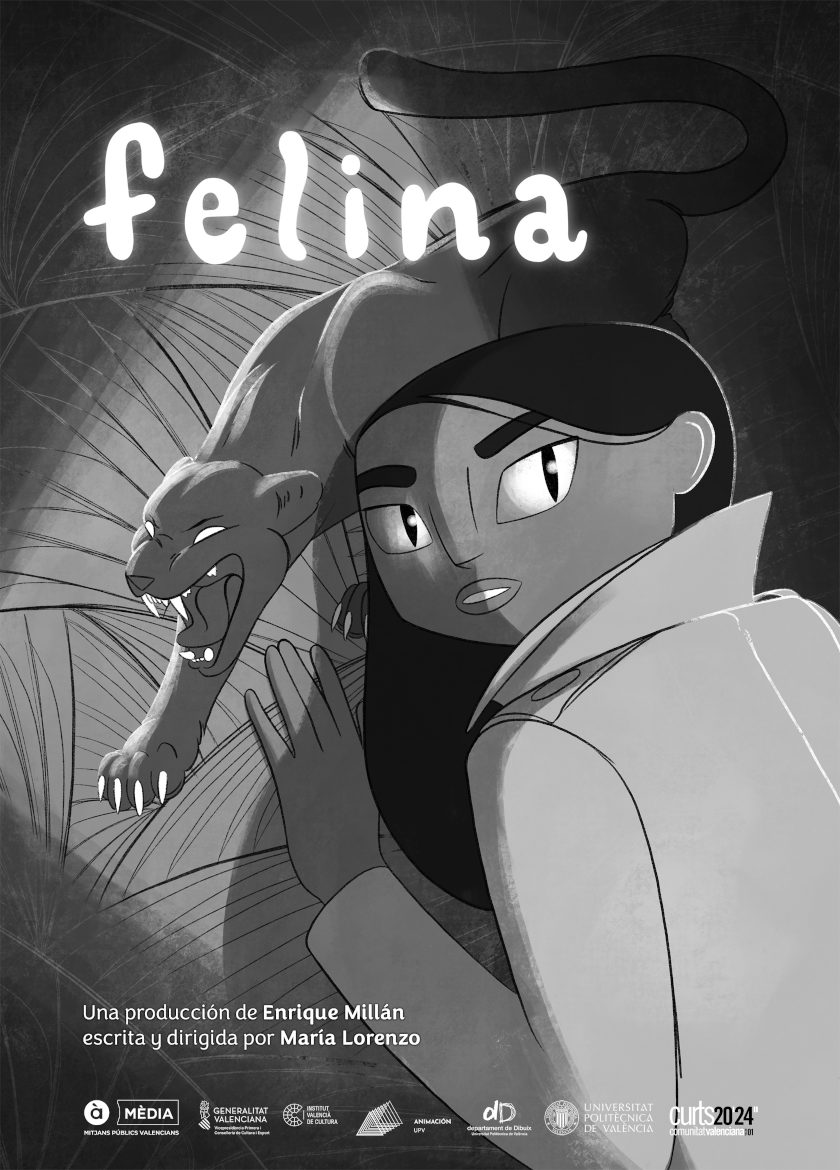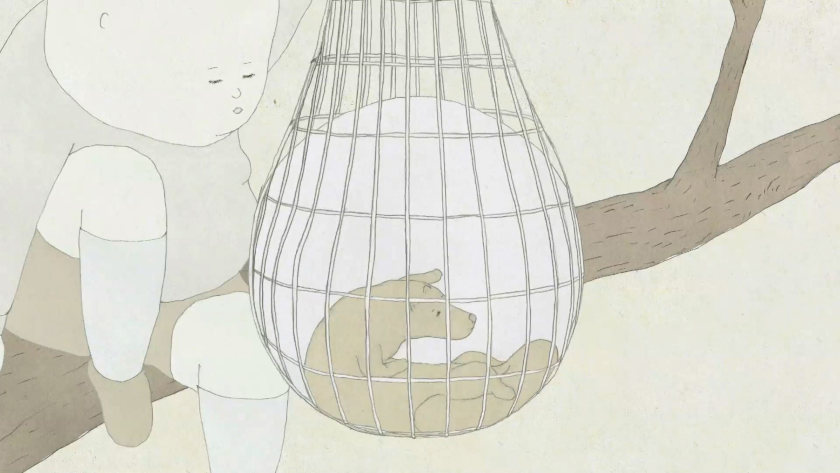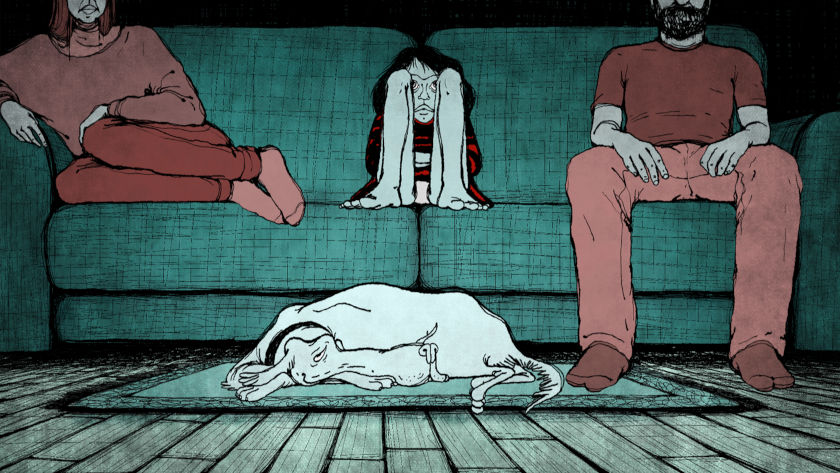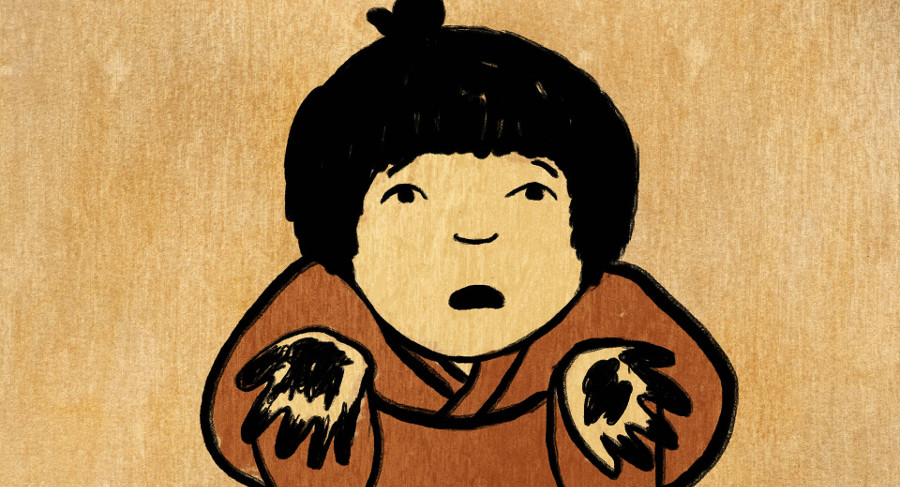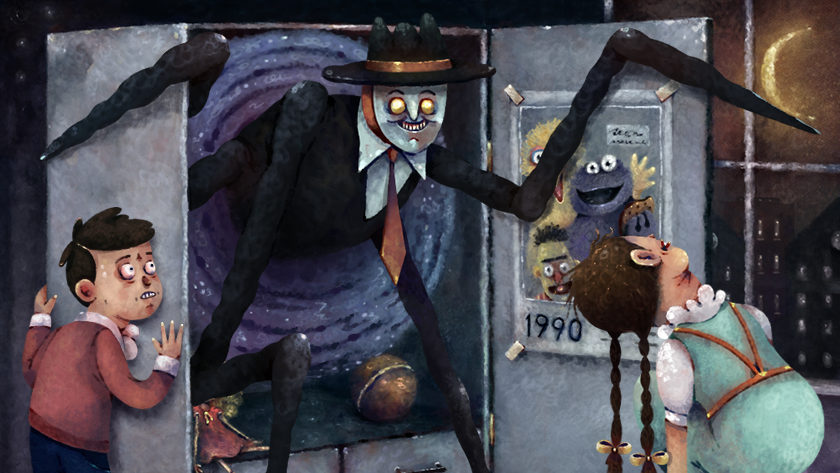'Felina' by María Lorenzo Hernández: A Woman-Cat in A Noirish Animation Short
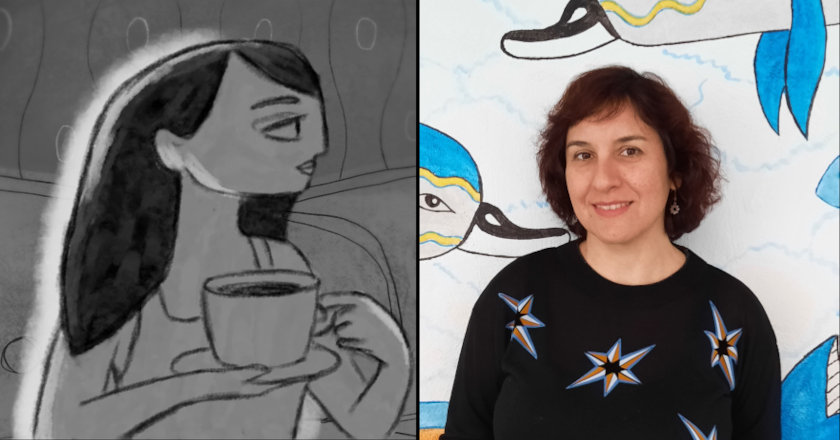
Spanish animation director, scholar, and University professor (Department of Design, Faculty of Fine Arts, Universidad Politécnica de Valencia, Spain) María Lorenzo Hernández keeps herself busy at least since the early 21st century, with animation shorts like ‘Portrait of D’ (2004), ‘The Night Ocean’ (2015, a Goya-nominated film) and her latest ‘Urban Sphinx’ (2020) and ‘Fashion Victims 2.0’ (2023) - both selected at Annecy Festival, among many other selections. That is apart from her many academic achievements and book and article contributions (including her Con A de animación Spanish-language academic journal editorship).
Her latest animation short (premiered in Animac Lleida this February, and also in the Shorts Corner of Malaga Film Festival) is the noirish 2D animation emotional mystery ‘Felina’.
Felina is a woman capable of turning into a panther; or maybe a panther capable of turning into a woman. She is in love with a blind pianist to whom she does not want to reveal her condition. However, one day she receives unexpected news: she is pregnant with kittens - Film Synopsis
We talked to María Lorenzo Hernández on the film, whose idea it seems to have been gestated in the last century. “My first personal short film, done as a studies assignment in 1999, was an animated adaptation of Rainer Maria Rilke’s poem The Panther”, she tells Zippy Frames. The idea of being mighty although dispossessed of any freedom resonated with the Valencia animation artist.
Other threads of thought came to the fore. Jacques Tournier’s classic horror ‘Cat People’ (1942) conveyed the idea of the uncertainty of the main character’s true nature; the German expressionistic milestone ‘Das Kabinet der Dr. Caligari’ (1918) was particularly instrumental in referencing the circus scenes.
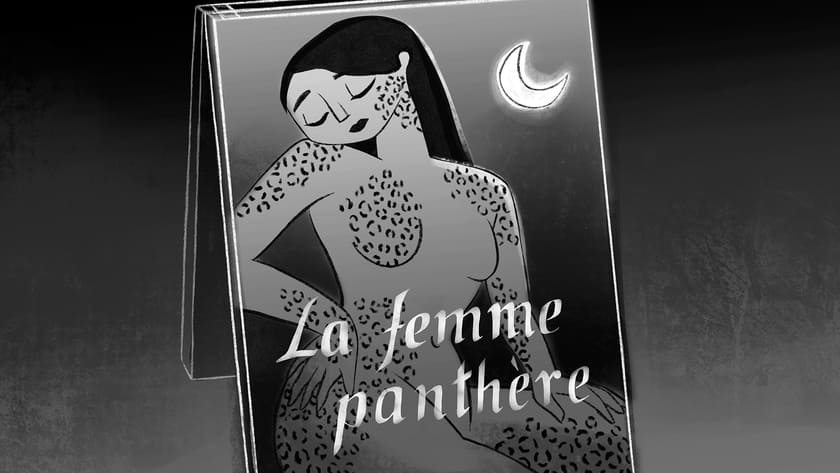
“I grew up watching classic films on TV while I was doing my school homework, and this is my visual universe”, Lorenzo Hernández states. “I like films of “elegant horror”. Her bucket list includes Otto Preminger’s ‘Laura’, ‘The Picture of Dorian Gray’ (1945), and Fritz Lang’s 1944 ‘The Woman In the Window’. In turn, she tried to exhibit the poetically mysterious feeling in her previous work (‘Portrait of D’, ‘The Carnivorous Flower’, ‘The Night Ocean’). For ‘Felina’, wanted a happy ending to a story that had very dark undertones.
References are nice, but this is only the beginning of the work done. “The first sketches of a panther woman trying to hide her condition come from 2010, if not earlier”, María Lorenzo Hernández. Yet everything was formed, including the animatic during the lockdown (“I was raising my newborn son, Miguel Ángel”). For those who are afraid to touch their first script draft, it is useful to know that the ‘Felina’ script went over 20 revisions (many characters died and were resurrected in the process).
The villain (we meet him in the second part of the story) proved to be the most difficult thing. From a mad doctor hidden in an abandoned zoo, he became a master of ceremonies of an animal cabaret, a sort of decadent circus where other animal people are imprisoned. The circus provided also the film’s ending.
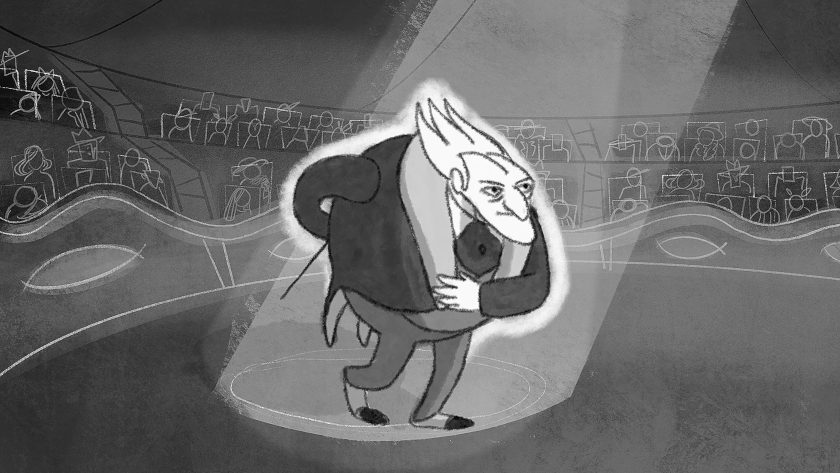
‘Felina’ and producer Enrique Millán found the first of the film’s funding sources in À Punt Mèdia (beginning of 2022); the Institut Valencià de Cultura funding followed (end of 2022), and the Universitat Politècnica de València also supported the film. 2023 became the production year of the film (“A very rushed time for a 12-minute animation short, but Enrique Millán and I were happy with the results”). Which meant that the film’s development had to finish much earlier. 4 animatic versions were made, the last of which was completed in February 2022.
The first three animatics were drawn in pencil, with thumbnails, while the last one was designed by computer, with the characters very close to their final design. Later, animation layout and tests were carried out with Blender and, when the work process was clear, we began production.
The look of the short looks deceptively simple -but it helps to focus attention on the feelings behind it, the director reminds us. Which, again, does not imply that everything was clear sailing. An earlier idea of animating with charcoals was abandoned in favor of using the computer -but still, it would need a 3D film with 2D textures. One more change and the Blender software provided the answer. “I used the Grease Pencil animation tool from Blender, and it became a 2D film. It was important to find brushes that reproduced well the aspect of handmade drawings, and to devise a production pipeline that enhanced this result”.
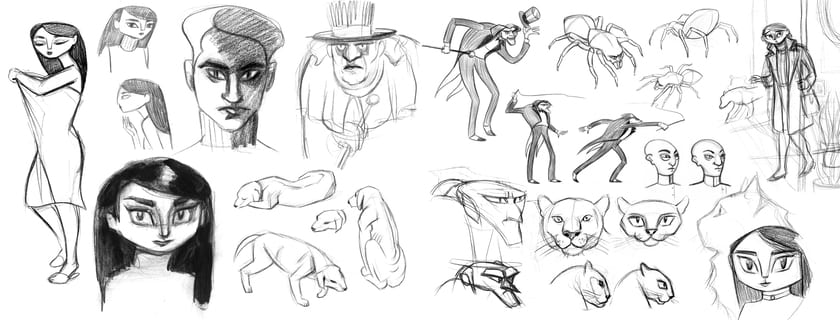
Character sketches for 'Felina'
Paola Tejera (layout) and Alberto Sanz (animation) helped the director in this process. Marta Gil, as animation director, established guidelines for the graphic treatment of the characters. Designers Carla Moliner and Gael García collaborated on the coloring.
One aesthetic choice was the ‘white halo’ effect surrounding the characters’ bodies. “The characters needed to stand out from the background, and that, at the same time, there was integration into the whole”. The white lines suggested contrast and illumination (also simplifying the characters’ contour), while the backgrounds gave on the other hand a rich variety of several gray shades and textures. In the end, everything served the handmade style María Lorenzo Hernández wanted to impose on the black & white film.
‘Felina’ is very different from the director’s more recent collage/ abstract animation efforts, and it is a straight (even if mysterious and dark) narrative story. “I have this kind of creative schizophrenia that oscillates between very experimental and abstract films, and stories told in a very traditional way. But I think 'Felina' works because its approach is very restrictive,” she notices. The no-dialogue, no-color films build their relationship between the images, the sound, and the music. She also had other partners in crime to create this visual world: Julia Happymiaow (art direction), Carla Moliner (backgrounds), Gael García (designed the non-human characters).
| Related: Urban Sphinx by María Lorenzo Hernández |
What about the music? The 40s jazzy music by her regular collaborator, Armando Bernabeu Lorenzo, started very early in the process; during the final animatic, musical themes were created. Musical references like Kurt Weil’s ‘The Cannon Song’ or Astor Piazzola’s ‘Libertango’ were used, but the final film soundtrack is completely scored by Bernabeu Lorenzo. “The references help to build the intention and rhythm of the scenes, but it is important to keep them aside and imagine the film with other music that does not sound like a copy or falsification”.
3 months of the soundtrack followed, with some themes finding a harder time (almost ten consecutive versions) than others. “For me, the most beautiful theme is the animal people waltz: Armando sent me this waltz and I tried to combine it with the circus scenes. The melancholic music changed the meaning of the scene because it reflected the sadness of those characters”. In June 2023, music and editing were finished; foley artist Martí Guillem introduced sound effects that reinforced the intensity of the scenes, especially in the ending.
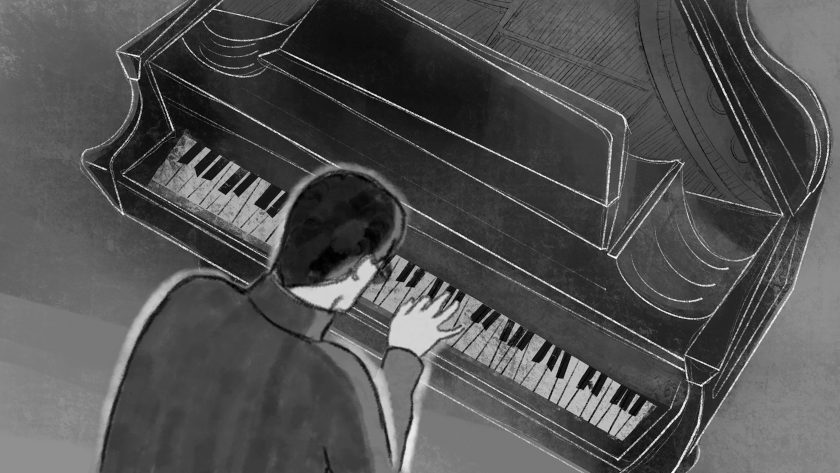
The film resonates with our childhood fears; spiders take a big chunk of the film’s visual and narrative space. “It is a sinister character who reflects everything we have hidden. We have spiders in the house when we don't clean, for example. When we move heavy furniture, there they are. Spiders are like an uncomfortable secret”.
This is a film about secrets as well, and spiders have also their psychoanalytic significance (mother figure, mere appearances). “ That's why I finally thought that its place should be the world of entertainment”, the director notes. The central character, of course, Felina, has her double secrets (a woman becoming a panther or a panther becoming a woman). Animal people in the film (neither fully human nor fully animalistic) also reveal a gender-bending identity that surrounds the ‘closeted’ character. In all cases, self-acceptance of your true form (human or animal) is the key -and not only for the central character.
Spanish independent animation seems to be making its steps toward emancipation. “Portugal had a more consolidated concept of the ‘auteur’ animation than Spain had, but we now have many new authors, especially women animators -there are more feature films and series led by women”. Financing doesn’t follow that trend, which has led many Spanish animation talents to work outside of Spain (still, a demand for 2D animators is now present).
Making films for María Lorenzo Hernández is always editing, whether she has to deal with photographs or 2D designs (“The only important difference is the degree of improvisation you can afford”). ‘Felina’ is a film she could work out the characters’ acting, and she would like in turn to give it back to its audience (her children, María and Miguel Ángel have been its first audience; the film was conceived from and for them, and they are present in the final dedication that works as “The End”). “Armando, the composer, told me after finishing the music for the credits: ‘I think I had a little tear ready to come out.’ That's the idea”.
In the meantime, prepare yourselves for a roller-coaster of emotions when watching ‘Felina’, the black-and-white noirish animation short that reshuffles our notions of being on the hide -and hopefully move (or jump) to a safe place and itinerary.
‘Felina’ is currently traveling the festival circuit and is distributed by the CURTS program — an initiative from IVC that selects the best films from the Valencian Community.
Watch the 'Felina' trailer:
Credits:
'Felina', 2D animation, 2024 (11'56'', Spain)
Directed by: María Lorenzo | Produced by: Enrique Millán | Art by: Julia Happymiaow, Carla Moliner, Gael García, María Lorenzo | Music by: Armando Bernabeu Lorenzo | With the support of Institut Valencià de Cultura, À Punt Mèdia, and Universitat Politècnica de València.
About:
María Lorenzo Hernández (1977) is an animation teacher at the Faculty of Fine Arts, Universitat Politècnica de València, Spain. Her short film 'The Night Ocean' (2015) has been nominated for the GOYA Spanish Academy of Film Awards. Her short films 'Portrait of D.' (2004), 'The Carnivorous Flower' (2009), and 'Impromptu' (2017) received several awards and were selected at international animation festivals such as Annecy, Anifest, Anima Mundi, Anima Brussels, London, Zagreb, Stuttgart, Ottawa, etc. In 2012 she coordinated the collective film 'The Cat Dances with its Shadow' (2012). 'Urban Sphinx' (2020) and 'Fashion Victims 2.0' (2023) paid tribute to street artists from the city of Valencia. Her most recent work is 'Felina' (2024), a fantasy/noir short film.
